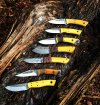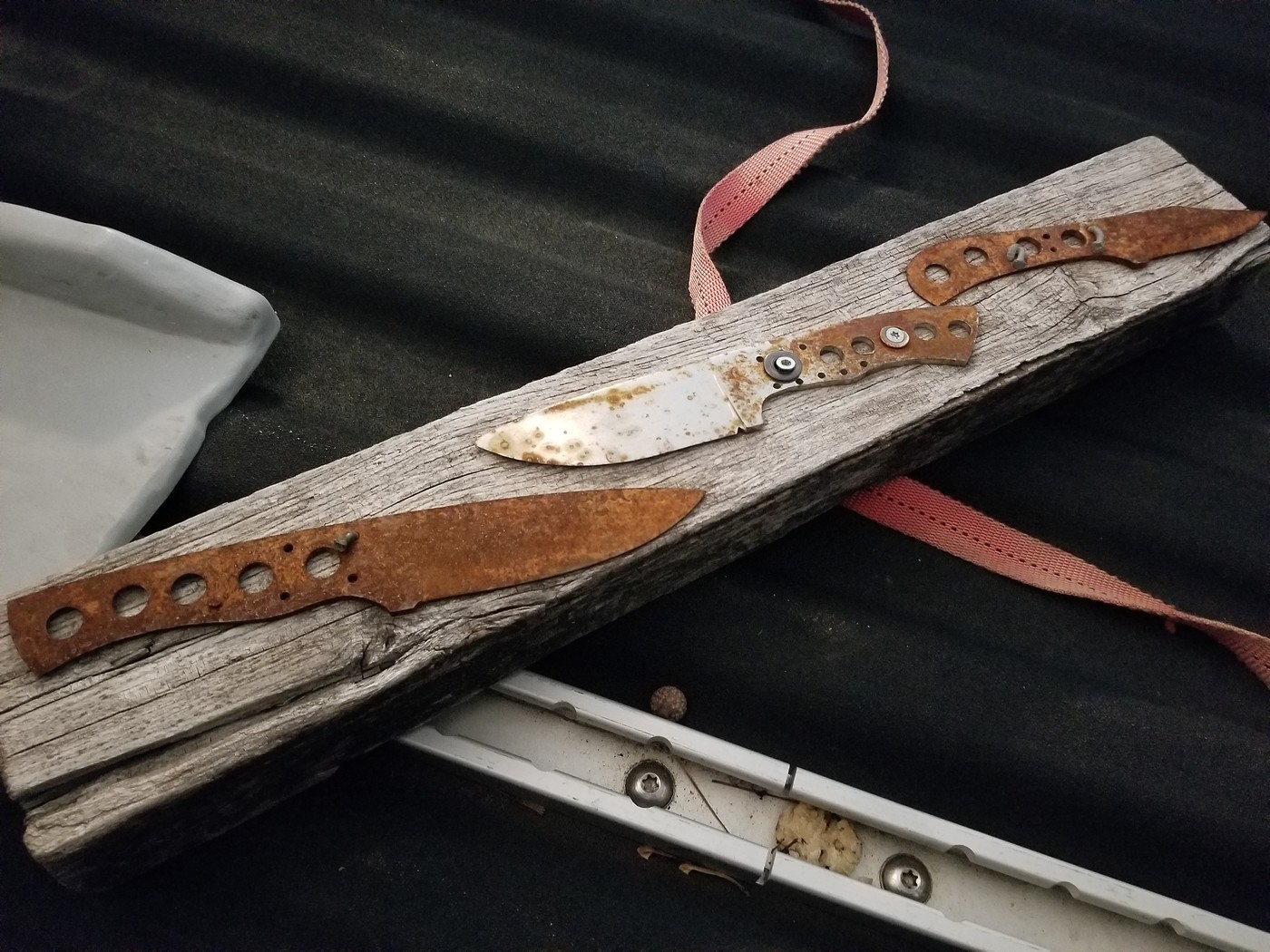As most here are aware, Fiddleback Forge recently started producing some knives using AEB-L steel in addition to the A2 they have been using. AEB-L is a stainless steel, and being something new, a few folks have had questions about it. One of which relates to its toughness or durability. At the risk of increasing my Friday competition for AEB-L blades, I wanted to share my experiences with this steel.
Just before I first learned of Fiddleback Forge last year, I made the decision that all my new knife purchases would be stainless. I try to keep my knives looking new, and with everything else I have to do, I didn't really want to add knife maintenance to the list. Then the Fiddlebug bit, and I now have way more carbon steel knives than I ever imagined. So, I was ecstatic when the fabulous Fiddlebacks began showing up in AEB-L. I've added several to my collection already.
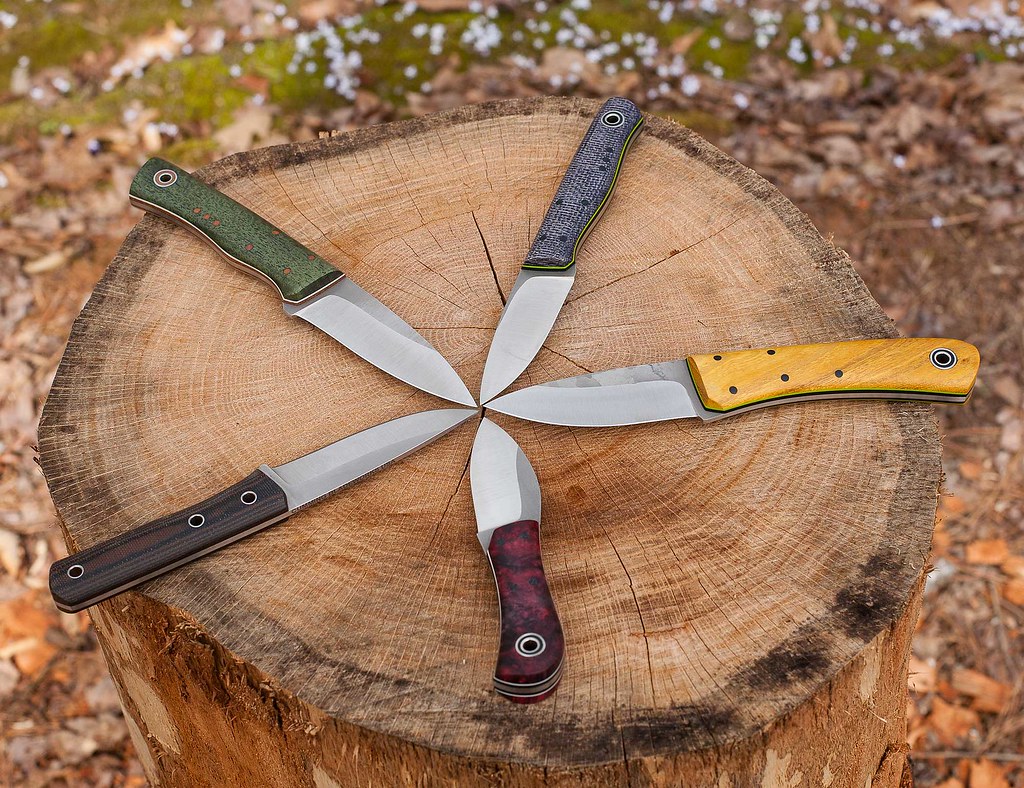
I first heard of AEB-L in late 2016 directly from a knife maker who said it was his favorite steel, and I've heard several since talk about really liking this steel. From what I understand, it was originally designed for razor blades, and I believe I read somewhere it really shines at around 61 HRC. I'm not sure how hard AEB-L Fiddlebacks are, but I believe Andy & Co. have nailed the heat treat.
For this evaluation, I chose a new Fiddleback model of which I happen to have in both A2 and AEB-L: the Bushcraft Tasker. The one in A2 is 0.125" (1/8) and the AEB-L version is 0.118".
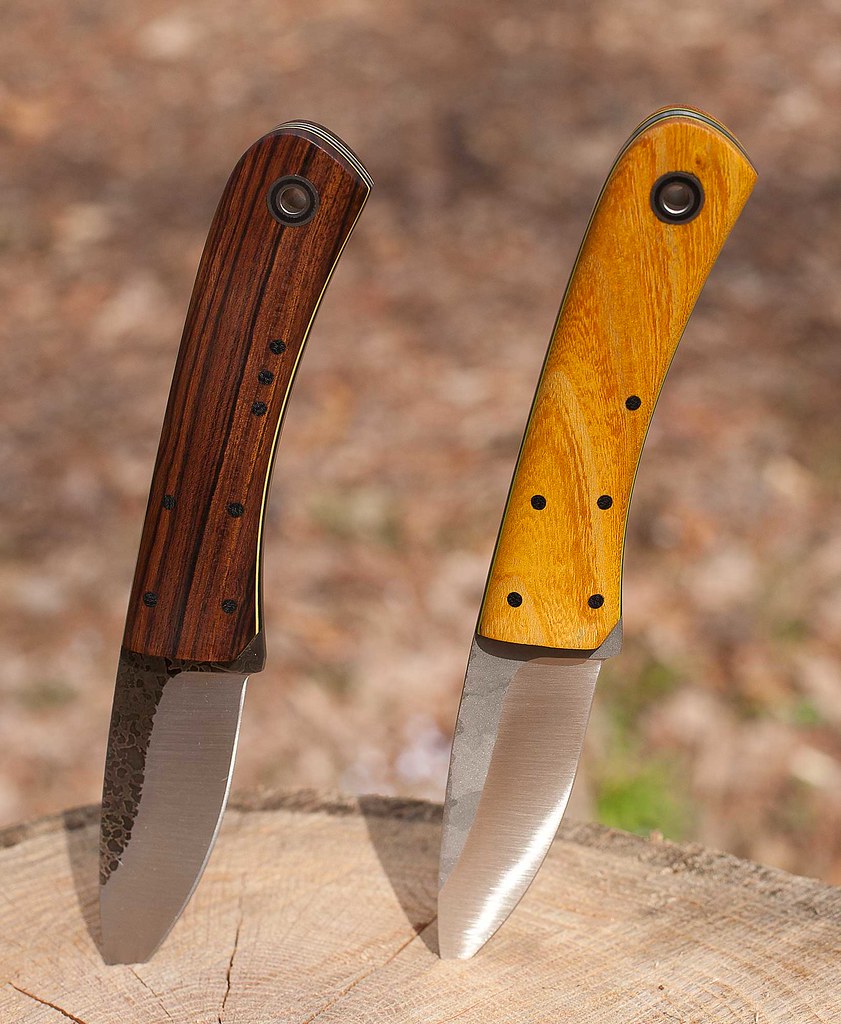
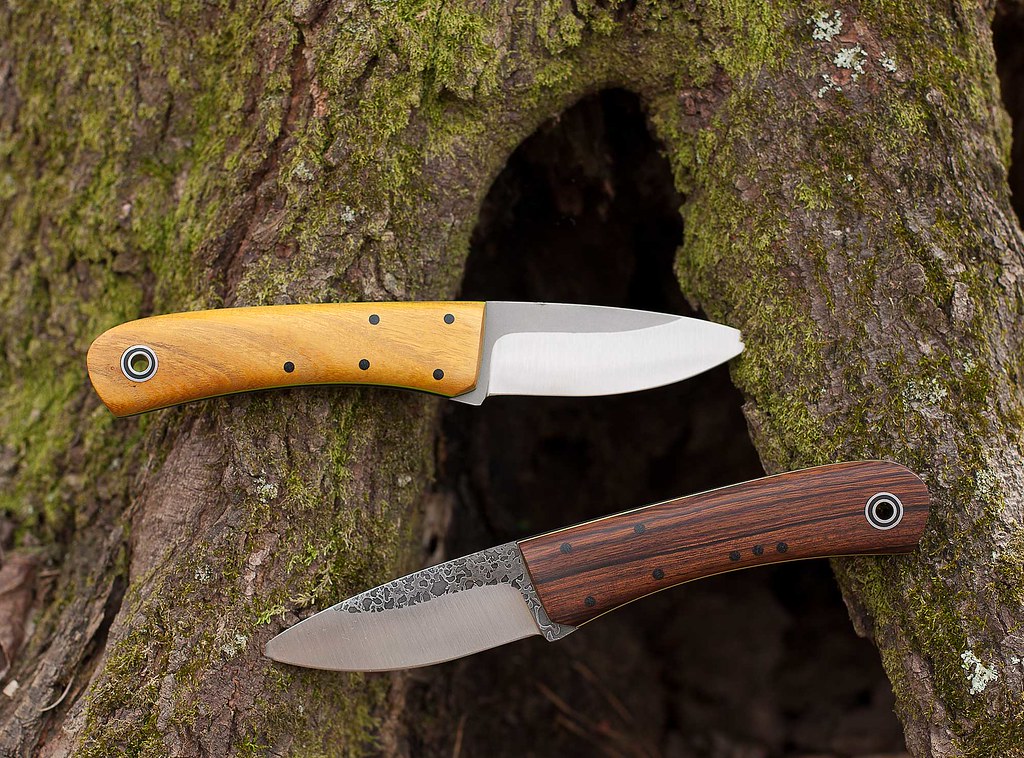
I started off with a little feather sticking. In all these tests, I tried to keep things as equal as possible between both blades. So, I used two ends of the same piece of wood for this test. Both knives performed equally well, and afterwards I examined the edge of each under 10X magnification. Both A2 and AEB-L still looked brand new.
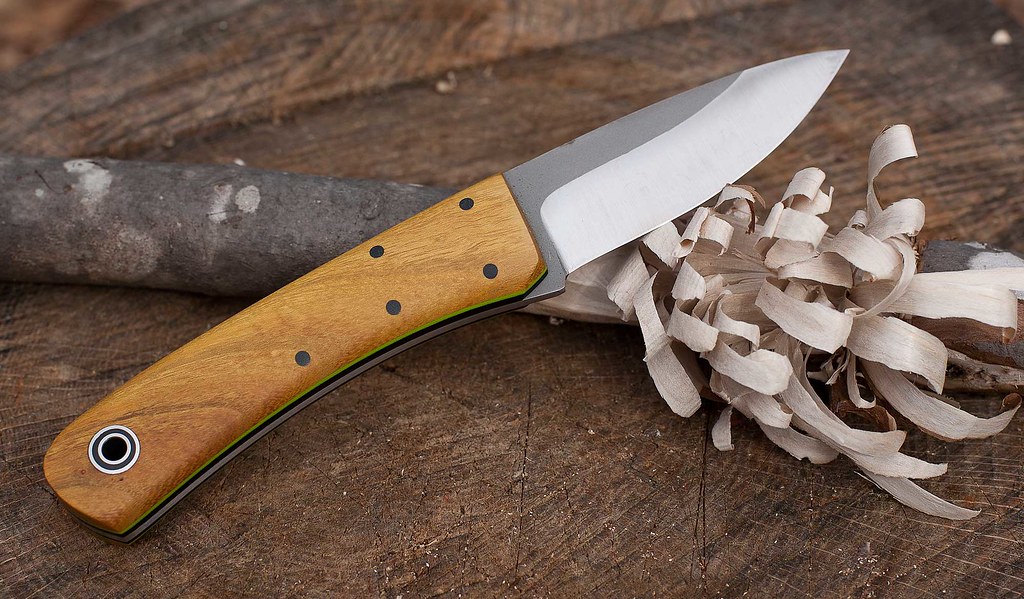
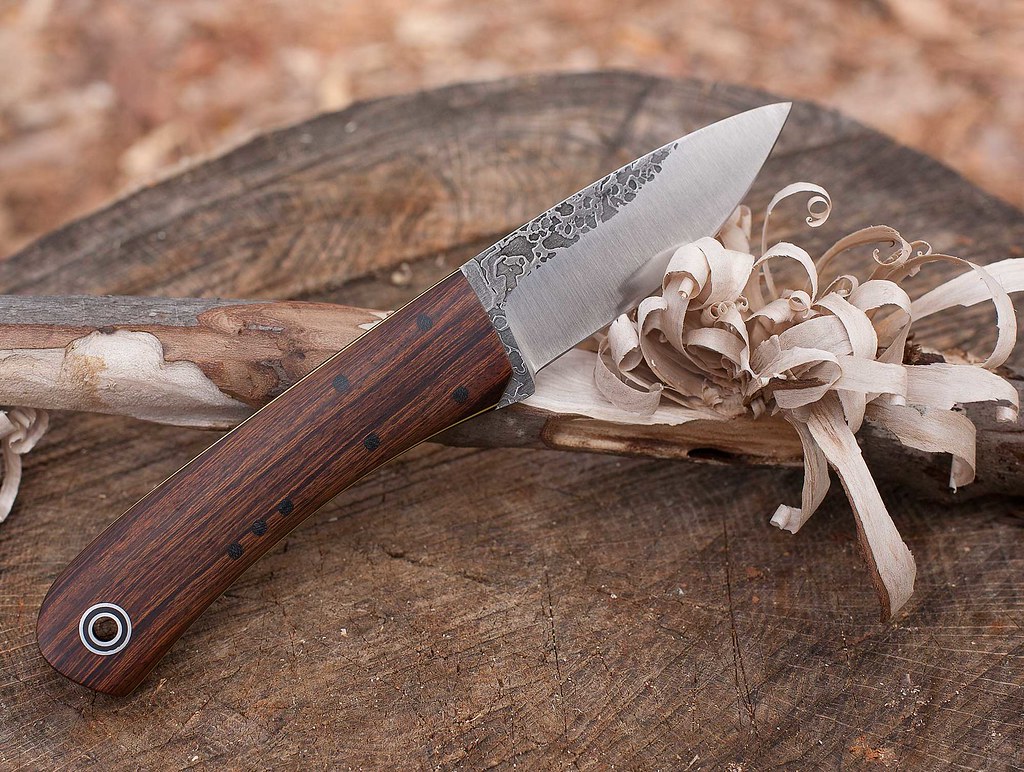
Next I cut a notch into a stick. Again, I used the same stick for both knives, and again, both performed the same. Like before, I ended this exercise by looking at the edges under 10X magnification, and they both still look the same.
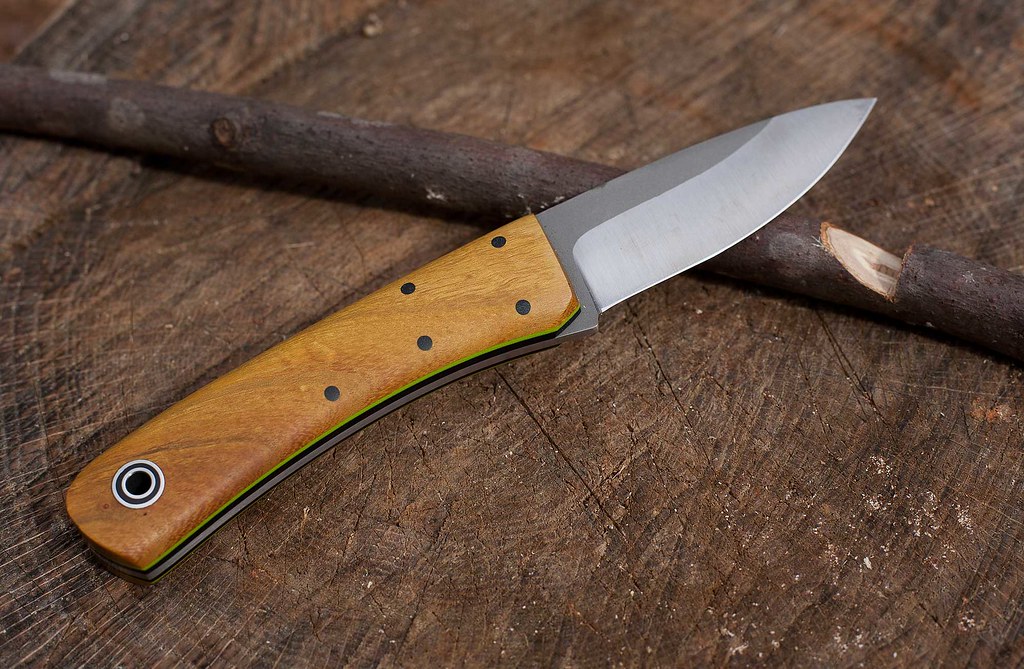
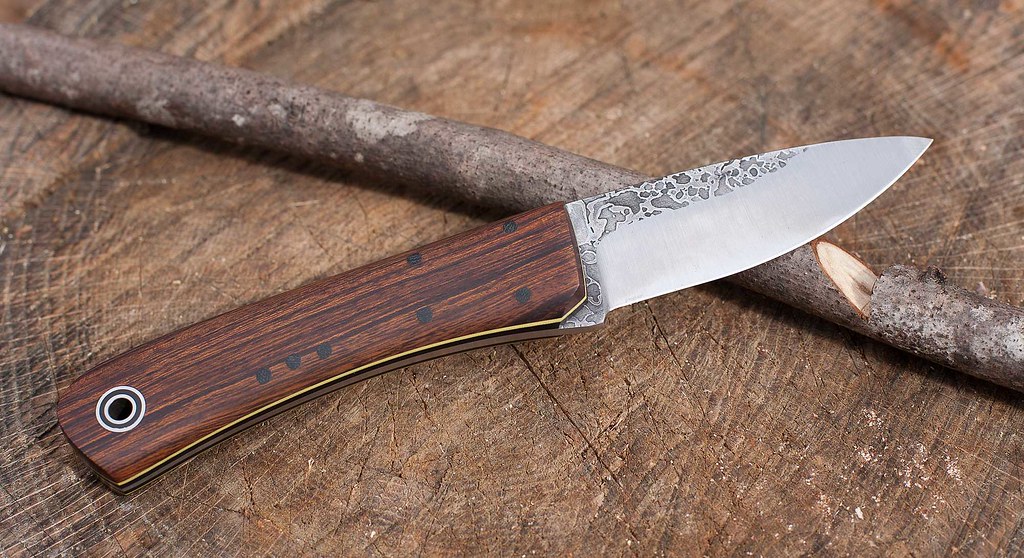
The next test was to baton some pine. I took about a 14" long half-round and batoned just outside the inner core. The outside piece was then batoned into kindling and the process repeated using the other knife. I avoided the inner core in an attempt to make things as equivalent as possible for both knives. Neither had any trouble going through the pine. Examined under 10X magnification, the edge of both knives was still good as new. By now, both blades are getting dirty, but that's really the only change.
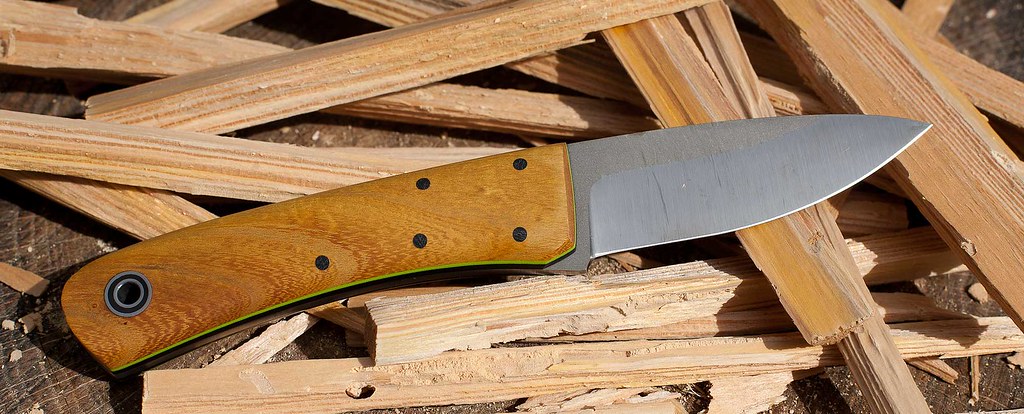
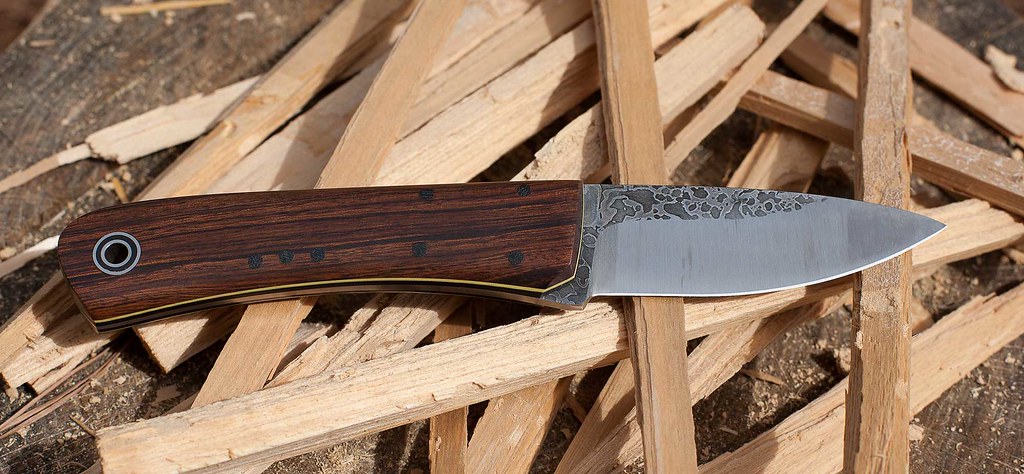
My next test was to baton some hardwood. For this, I chose a 12-inch long whole piece of dogwood, a very dense wood. I used a table saw to rip the wood into even halves, and proceeded to baton. It was considerably tougher to get through this than the pine, and I was fully expecting to see some impact to edges after this. Under 10X magnification, though, I could not find any rolled, chipped, or otherwise imperfect edge on either knife.
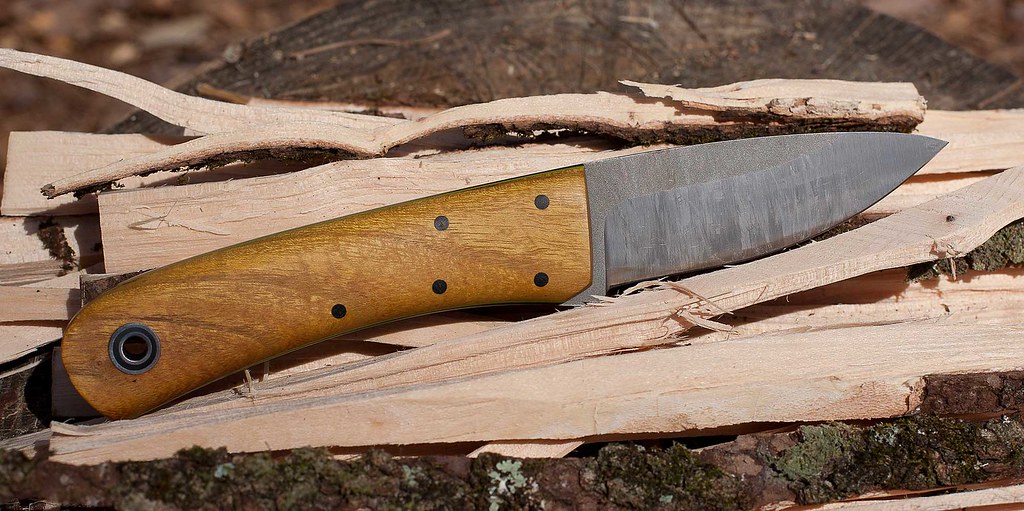
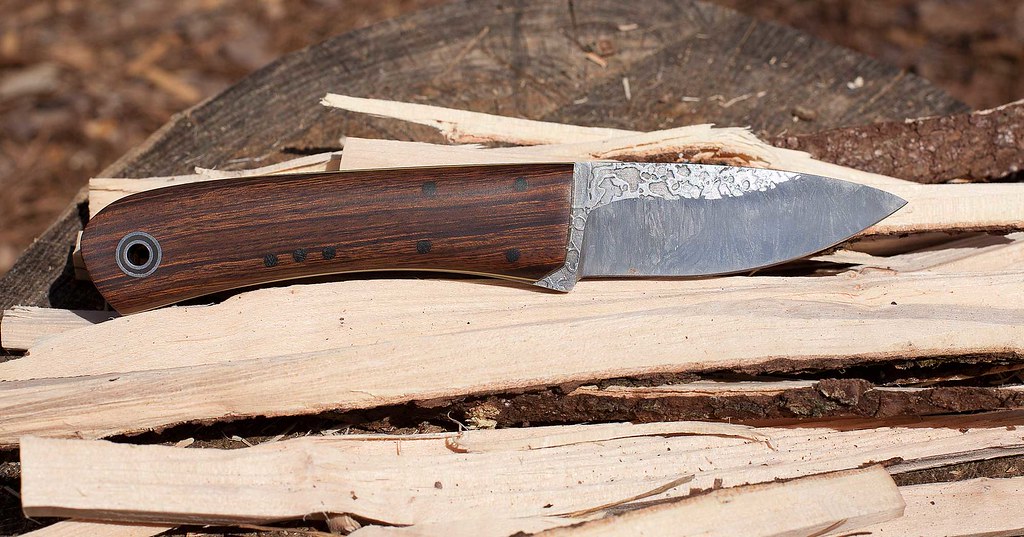
At the end of these tests...
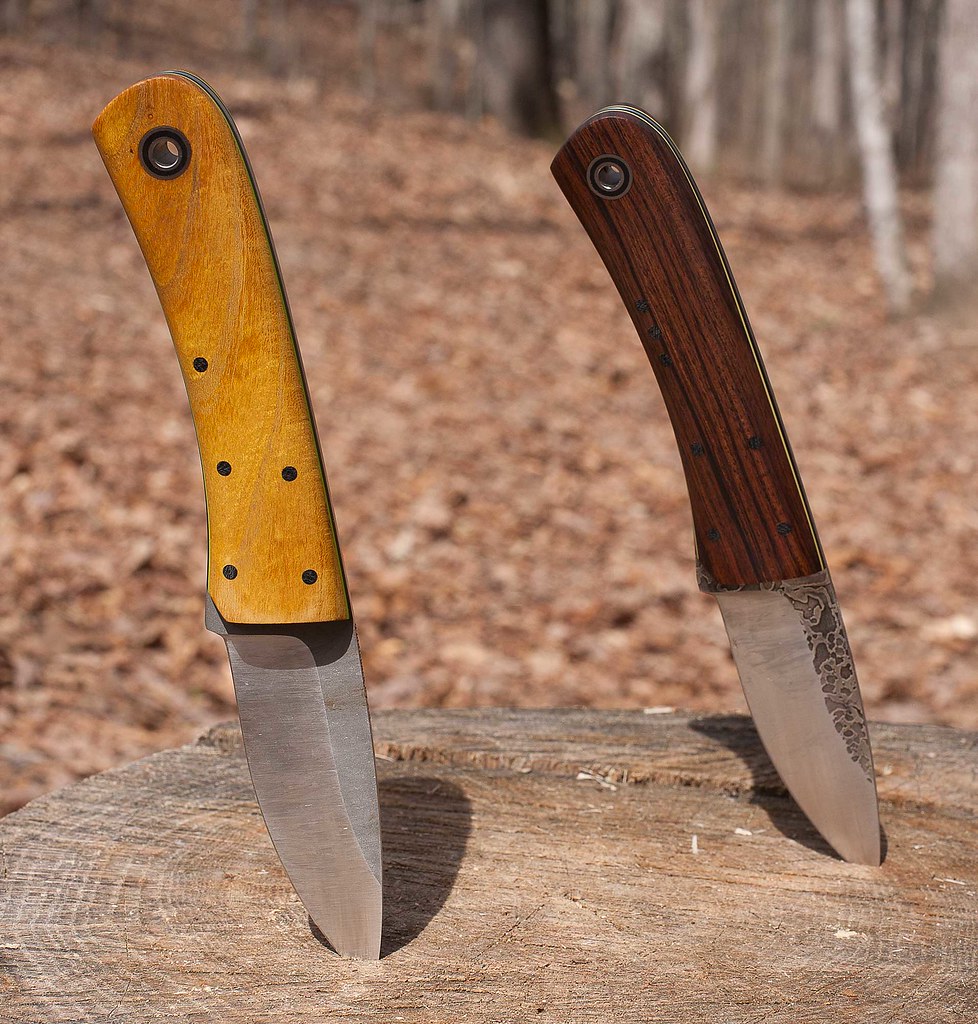
I then cleaned up both blades and turned a sheet of copy paper into narrow strips. Both knives cut through this the same as the day I got them. I conducted one final exam under 10X magnification. The A2 blade looked the same as before I began these tests. There was something with AEB-L blade on a very small part of the edge. It was visible only on one side, and running a cotton ball along the length of the edge did not pull off any fibers. I decided to run the knife over a strop a few times (took about a minute), after which whatever I saw was gone. I suspect it was a discoloration from the wood that my cleaning had not removed.
I have not owned any AEB-L models long enough that they need sharpening, so I don't have any direct experience with that yet. I have, however, heard knife makers say AEB-L's workability is about equivalent to 1095, so I expect it would be about as easy to sharpen.
From what I can tell, A2 and AEB-L are just about indistinguishable in terms of performance and toughness. In general, stainless steels are more brittle, so if you tend to pry things with your knives, you may see some bigger differences between them. Should you buy Fiddleback Forge knives in AEB-L? That's for you to decide, but I'd rather you not. I'll continue adding them to my collection, and I don't need any more sharks going after these blades.
As a side note, at the end of all this, my hands had a distinct yellow/orange tint. Wiping down the Osage scales with a damp paper towel left it yellow. This is the most I've ever used an Osage knife, and my hands did get sweaty toward the end as it warmed up outside. For all you Osage fans, is this common? If so, does it diminish over time?
Just before I first learned of Fiddleback Forge last year, I made the decision that all my new knife purchases would be stainless. I try to keep my knives looking new, and with everything else I have to do, I didn't really want to add knife maintenance to the list. Then the Fiddlebug bit, and I now have way more carbon steel knives than I ever imagined. So, I was ecstatic when the fabulous Fiddlebacks began showing up in AEB-L. I've added several to my collection already.

I first heard of AEB-L in late 2016 directly from a knife maker who said it was his favorite steel, and I've heard several since talk about really liking this steel. From what I understand, it was originally designed for razor blades, and I believe I read somewhere it really shines at around 61 HRC. I'm not sure how hard AEB-L Fiddlebacks are, but I believe Andy & Co. have nailed the heat treat.
For this evaluation, I chose a new Fiddleback model of which I happen to have in both A2 and AEB-L: the Bushcraft Tasker. The one in A2 is 0.125" (1/8) and the AEB-L version is 0.118".


I started off with a little feather sticking. In all these tests, I tried to keep things as equal as possible between both blades. So, I used two ends of the same piece of wood for this test. Both knives performed equally well, and afterwards I examined the edge of each under 10X magnification. Both A2 and AEB-L still looked brand new.


Next I cut a notch into a stick. Again, I used the same stick for both knives, and again, both performed the same. Like before, I ended this exercise by looking at the edges under 10X magnification, and they both still look the same.


The next test was to baton some pine. I took about a 14" long half-round and batoned just outside the inner core. The outside piece was then batoned into kindling and the process repeated using the other knife. I avoided the inner core in an attempt to make things as equivalent as possible for both knives. Neither had any trouble going through the pine. Examined under 10X magnification, the edge of both knives was still good as new. By now, both blades are getting dirty, but that's really the only change.


My next test was to baton some hardwood. For this, I chose a 12-inch long whole piece of dogwood, a very dense wood. I used a table saw to rip the wood into even halves, and proceeded to baton. It was considerably tougher to get through this than the pine, and I was fully expecting to see some impact to edges after this. Under 10X magnification, though, I could not find any rolled, chipped, or otherwise imperfect edge on either knife.


At the end of these tests...

I then cleaned up both blades and turned a sheet of copy paper into narrow strips. Both knives cut through this the same as the day I got them. I conducted one final exam under 10X magnification. The A2 blade looked the same as before I began these tests. There was something with AEB-L blade on a very small part of the edge. It was visible only on one side, and running a cotton ball along the length of the edge did not pull off any fibers. I decided to run the knife over a strop a few times (took about a minute), after which whatever I saw was gone. I suspect it was a discoloration from the wood that my cleaning had not removed.
I have not owned any AEB-L models long enough that they need sharpening, so I don't have any direct experience with that yet. I have, however, heard knife makers say AEB-L's workability is about equivalent to 1095, so I expect it would be about as easy to sharpen.
From what I can tell, A2 and AEB-L are just about indistinguishable in terms of performance and toughness. In general, stainless steels are more brittle, so if you tend to pry things with your knives, you may see some bigger differences between them. Should you buy Fiddleback Forge knives in AEB-L? That's for you to decide, but I'd rather you not. I'll continue adding them to my collection, and I don't need any more sharks going after these blades.
As a side note, at the end of all this, my hands had a distinct yellow/orange tint. Wiping down the Osage scales with a damp paper towel left it yellow. This is the most I've ever used an Osage knife, and my hands did get sweaty toward the end as it warmed up outside. For all you Osage fans, is this common? If so, does it diminish over time?

